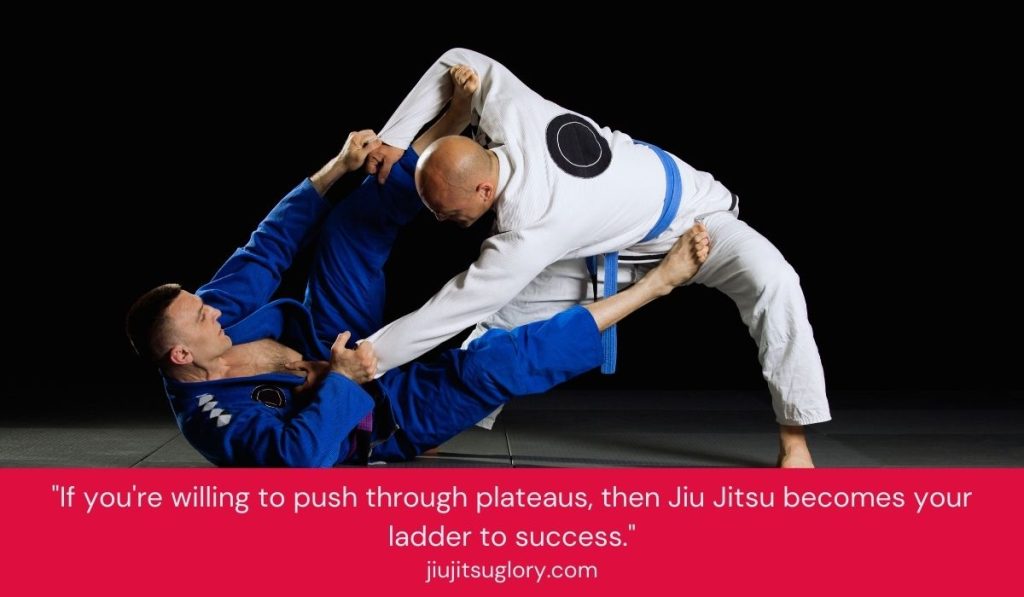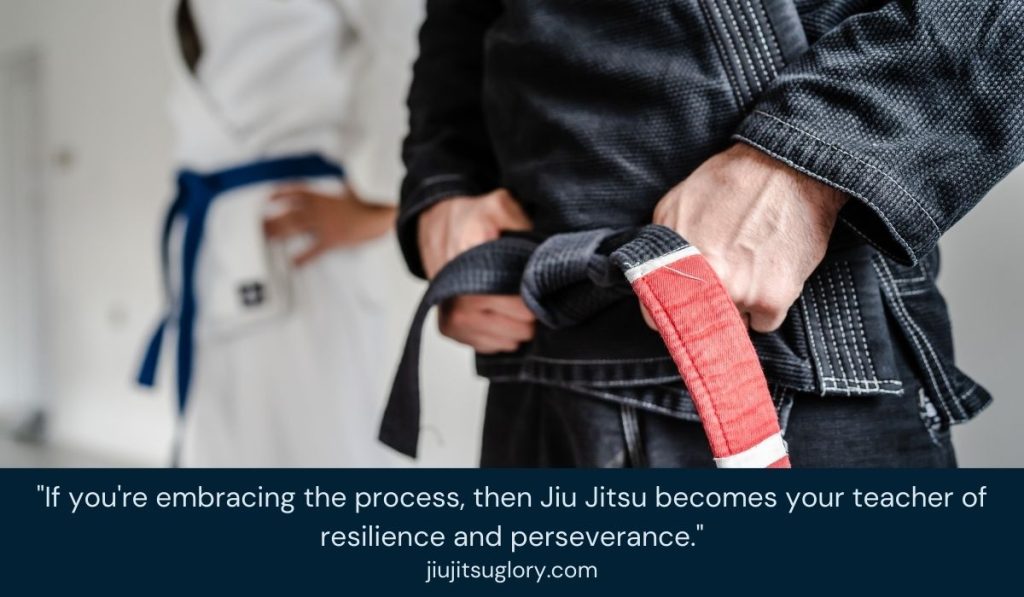Jiu-jitsu, meaning “gentle art” in Japanese, is a captivating martial art with ancient roots and a modern twist.
Predominantly practiced on the ground, it uses principles of angles, leverage, timing, and knowledge of human anatomy to achieve nonviolent victory over opponents.
Unlike martial arts, focusing on strikes, Jiu-Jitsu emphasizes close-contact grappling, chokes, and joint manipulations. Stay tuned for more!
Jiu-Jitsu Historical Journey

Originating thousands of years ago among Buddhist monks in India who needed self-defense that didn’t harm, Jiu-Jitsu traveled through feudal Japan, which became a battlefield necessity.
In 1915, Mitsuyo Maeda brought the art to Brazil, where it morphed into Brazilian Jiu-Jitsu (BJJ) through the pioneering efforts of the Gracie family and Luiz França.
These early innovators optimized techniques to maximize effectiveness, eventually crafting a distinct martial art recognized worldwide.
Cultural Impact and Expansion of Jiu-Jitsu

Brazilian Jiu-Jitsu’s spread to the United States in the 1970s marked the beginning of its global influence.
It surged in the 1990s with the advent of the UFC, showcasing BJJ’s effectiveness in mixed martial arts.
Today, it’s celebrated in numerous international competitions, growing in popularity each year.
An Accessible Martial Art to All People
One of the most inclusive martial arts, Jiu-Jitsu, is designed so that even smaller, less physically imposing individuals can defend themselves against larger foes.
This accessibility makes it suitable for any age, size, gender, or physical ability, embodying the principle that technique triumphs over brute strength.
Jiu-Jitsu vs. Other Martial Arts

While similar to Judo in techniques like throws and submissions, Jiu-Jitsu focuses more extensively on ground fighting and control, with a scoring system that rewards positions and transitions.
This is in contrast to the immediate victory conditions often seen in Judo.
Unlike striking-based arts like Karate or Taekwondo, Jiu-Jitsu’s effectiveness in real combat scenarios stems from its focus on grappling rather than punching or kicking.
Jiu-Jitsu: More Than a Workout
Often likened to human chess, jiu-jitsu provides a rigorous physical workout that boosts strength, cardio, and muscle tone through dynamic and isometric movements.
It’s also a mental exercise, enhancing problem-solving skills, reaction times, and strategic planning.
Every other worry fades on the mat, allowing full engagement in the art—making it a perfect escape from daily stress.
Jiu-Jitsu Belt System

Everyone begins at the white belt, the first of several colors that signify a practitioner’s progression in skill, knowledge, and experience.
Here’s the adult jiu-jitsu belt system:
- White Belt: Focus on fundamental techniques and survival skills.
- Blue Belt: Development of attacking strategies and refining defense.
- Purple Belt: Deepening understanding of flow and transitions between techniques.
- Brown Belt: Polishing skills and beginning to develop a personal style.
- Black Belt: Mastery of techniques and principles with ongoing refinement.
Otherwise, there is also a youth belt system!
- Youth Belts: For practitioners under 16, belts progress from white to various levels of gray, yellow, orange, and green, each reflecting the young practitioner’s growing competence and understanding.
Practical Benefits: Why Train in Jiu-Jitsu?

- Physical Health: Regular Jiu-Jitsu training offers a full-body workout that improves flexibility, strength, and cardiovascular health. It also aids in weight management and muscle tone enhancement.
- Mental Resilience: Jiu-jitsu’s strategic nature challenges the mind, enhancing focus, quick decision-making, and resilience under pressure. These cognitive benefits extend beyond the mat, improving overall life and work performance.
- Community and Support: Joining a Jiu-Jitsu academy introduces practitioners to a community of like-minded individuals who support each other’s growth and development. The social interactions fostered in training can lead to lasting friendships and a strong sense of belonging.
Jiu-Jitsu for Self-Defense
- Effective Techniques: Jiu-Jitsu’s techniques are highly effective in real-world self-defense situations. The art teaches control and restraint, allowing practitioners to neutralize threats without unnecessary harm.
- Scenario Training: Many schools incorporate realistic self-defense scenarios into their training, preparing students for potential real-life encounters in a controlled and safe environment.
Jiu-Jitsu in Popular Culture
- Media Representation: From movies and television shows to online tutorials and celebrity endorsements, Jiu-Jitsu has made significant inroads into popular culture, enhancing its appeal and accessibility.
- Influential Practitioners: Prominent figures in various fields, including actors, athletes, and public personalities, have taken up Jiu-Jitsu. They often share their training experiences and spread awareness about the benefits of this martial art.
Conclusion

Jiu-Jitsu is not just a martial art; it’s a comprehensive discipline that strengthens the body, sharpens the mind, and teaches valuable life lessons about respect, discipline, and perseverance.
It is a lifestyle that challenges practitioners to continuously improve and adapt, embodying the philosophy that personal development is a never-ending journey.
Whether for self-defense, competition, or personal growth, Jiu-Jitsu offers a rewarding journey for anyone willing to step onto the mat.
Related: The search for the perfect soap for Jiu-Jitsu enthusiasts is about maintaining cleanliness and embracing a lifestyle that prioritizes health, hygiene, and the art of martial arts. Read More!


